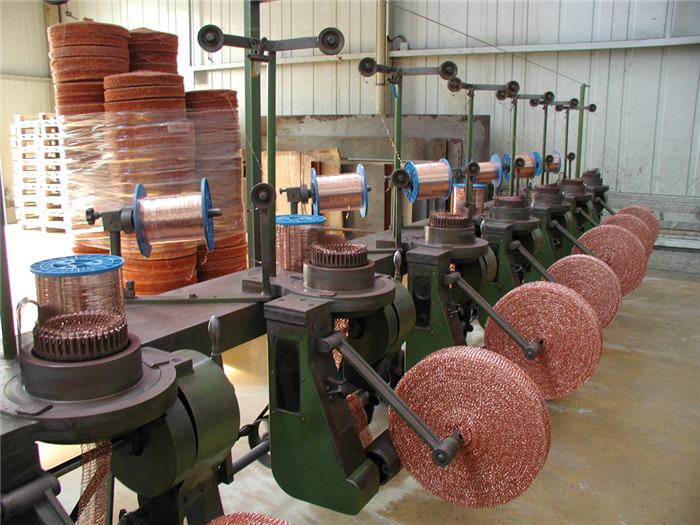Here is a more detailed description of the knitted wire mesh processing:
Material Selection: Choose the appropriate material based on the application requirements. Knitted wire mesh can be made from various materials such as stainless steel, copper, aluminum, or other alloys. Consider factors such as corrosion resistance, conductivity, temperature resistance, and mechanical properties.
Wire Drawing: The selected material is typically in the form of wire coils. The wire undergoes a drawing process to reduce its diameter to the desired size. This is achieved by passing the wire through a series of dies, gradually reducing its diameter while increasing its length.
Knitting Process: Knitting wire mesh is based on principles similar to garment knitting, but is produced using specialised heavy-duty machinery. Ourun Wire Mesh has a huge range of knitting machines, cylinder heads, and strand feeder set-ups which allows them to make knitted mesh to almost any customer specification.
Inspection and Quality Control: The knitted wire mesh is inspected to ensure it meets the required specifications. This involves visual inspections for defects, measurements of wire diameter and mesh size using appropriate tools such as calipers or gauges, and other quality control checks to ensure the mesh’s performance and consistency.
Finishing and Packaging: Depending on the application, the knitted wire mesh may undergo additional finishing processes. This can include surface treatments like coating or plating to enhance corrosion resistance or aesthetics. Finally, the finished mesh is packaged and prepared for shipping to the customer, ensuring it is protected during transportation.
